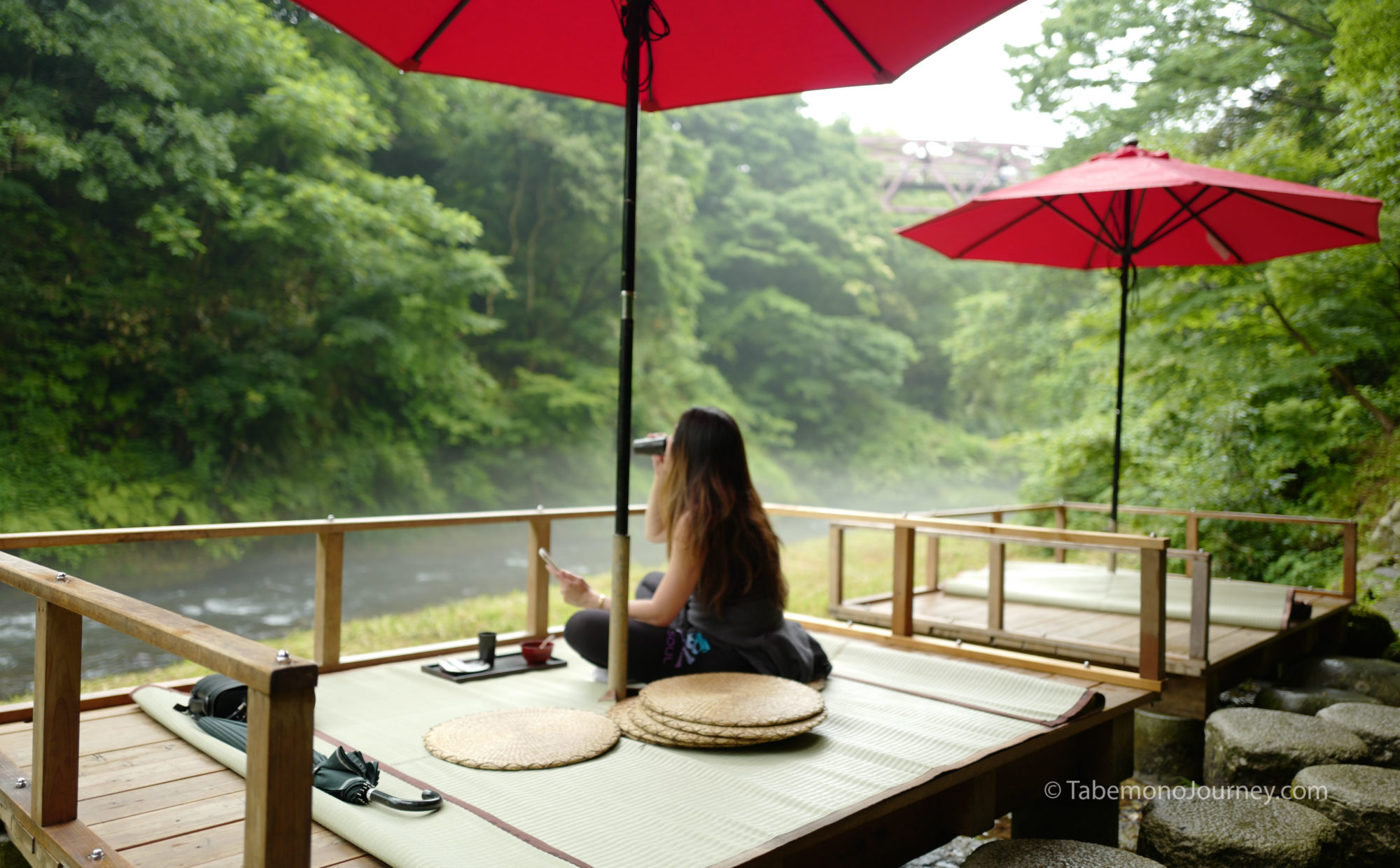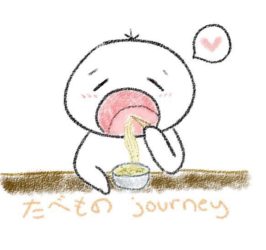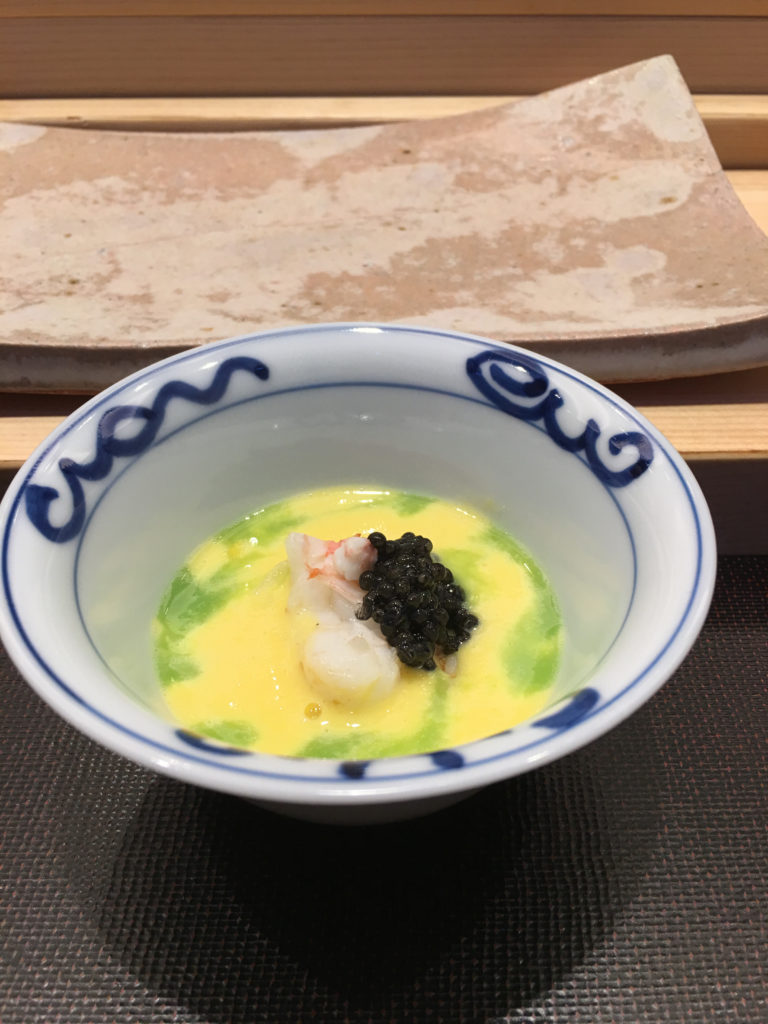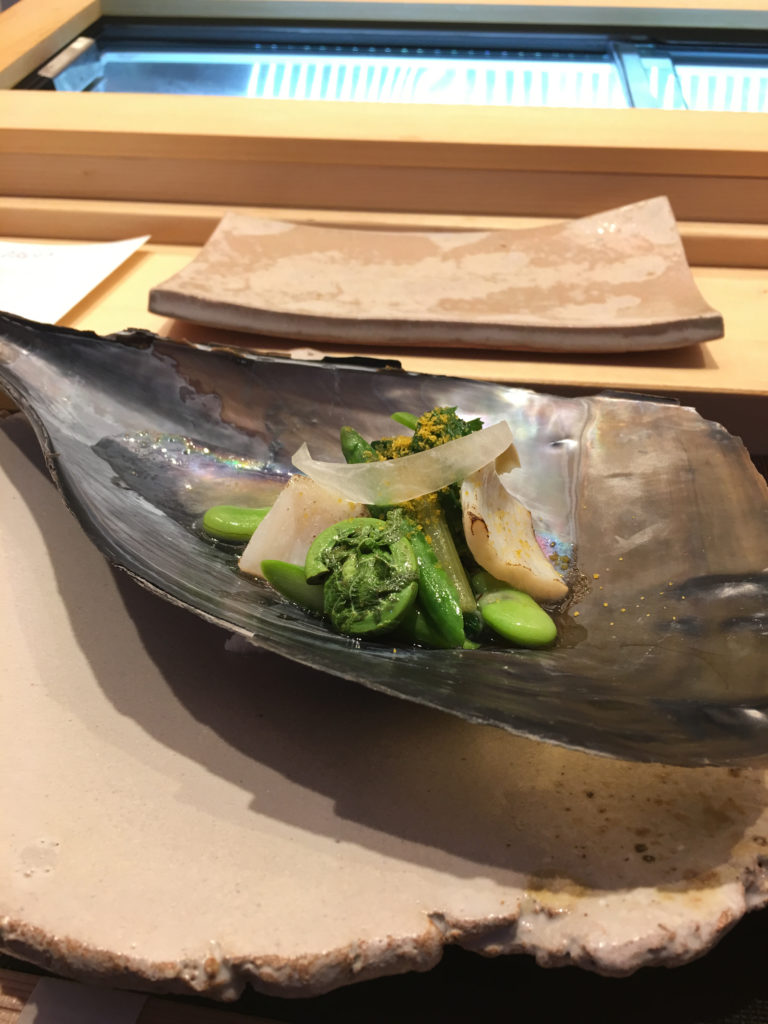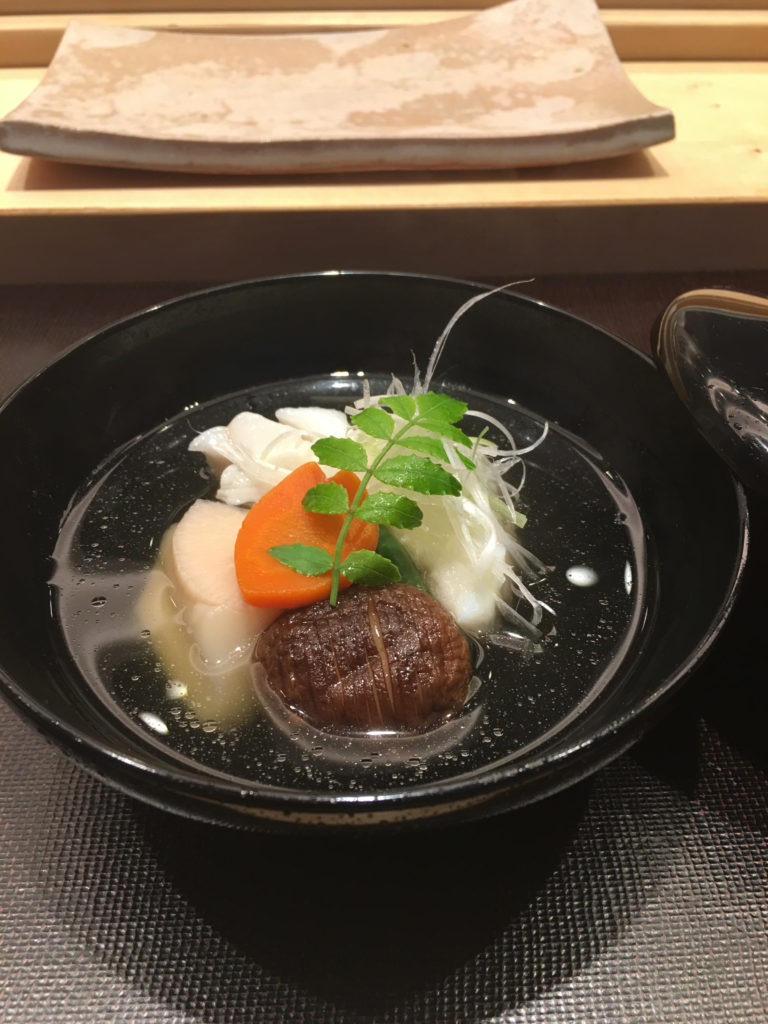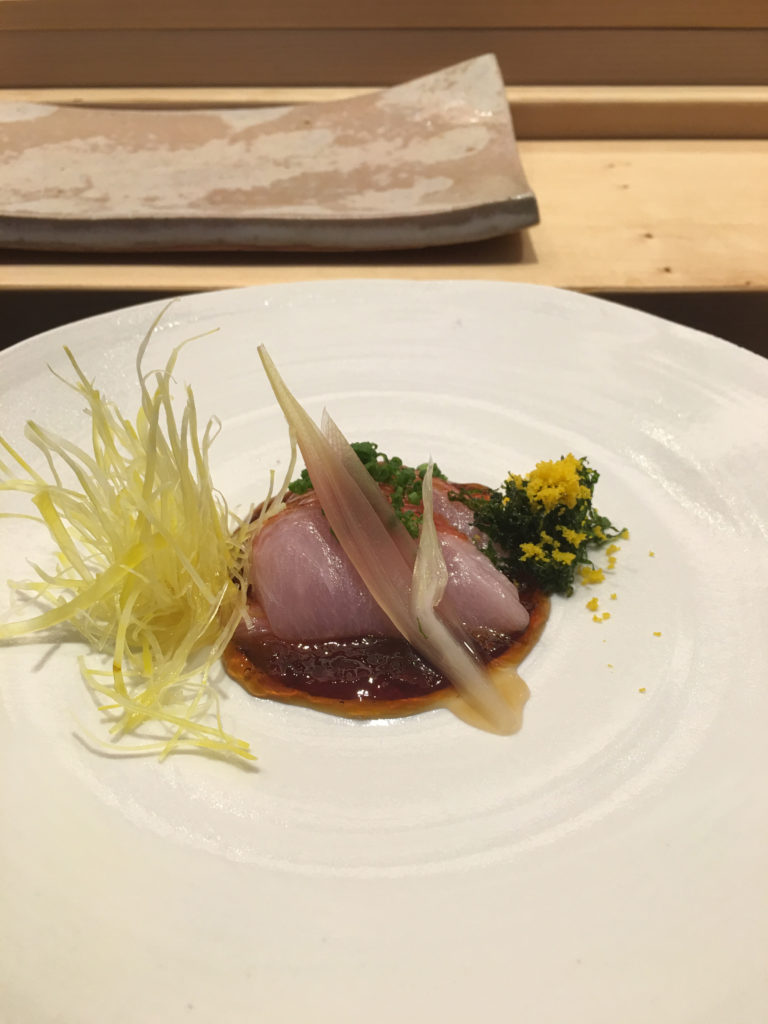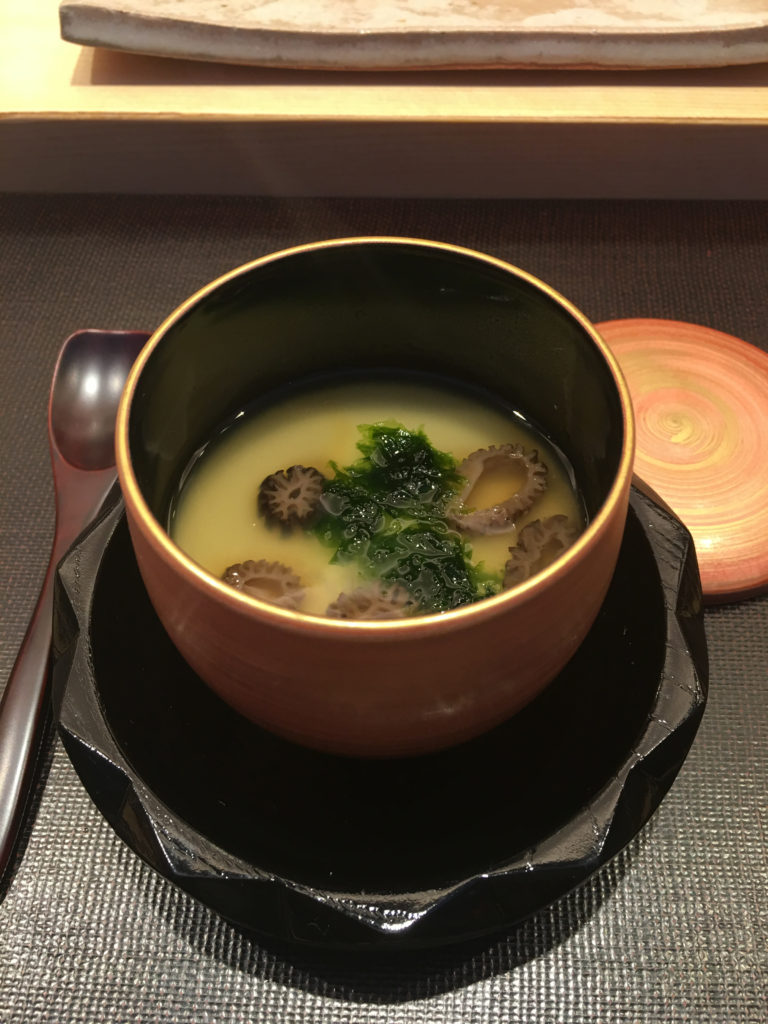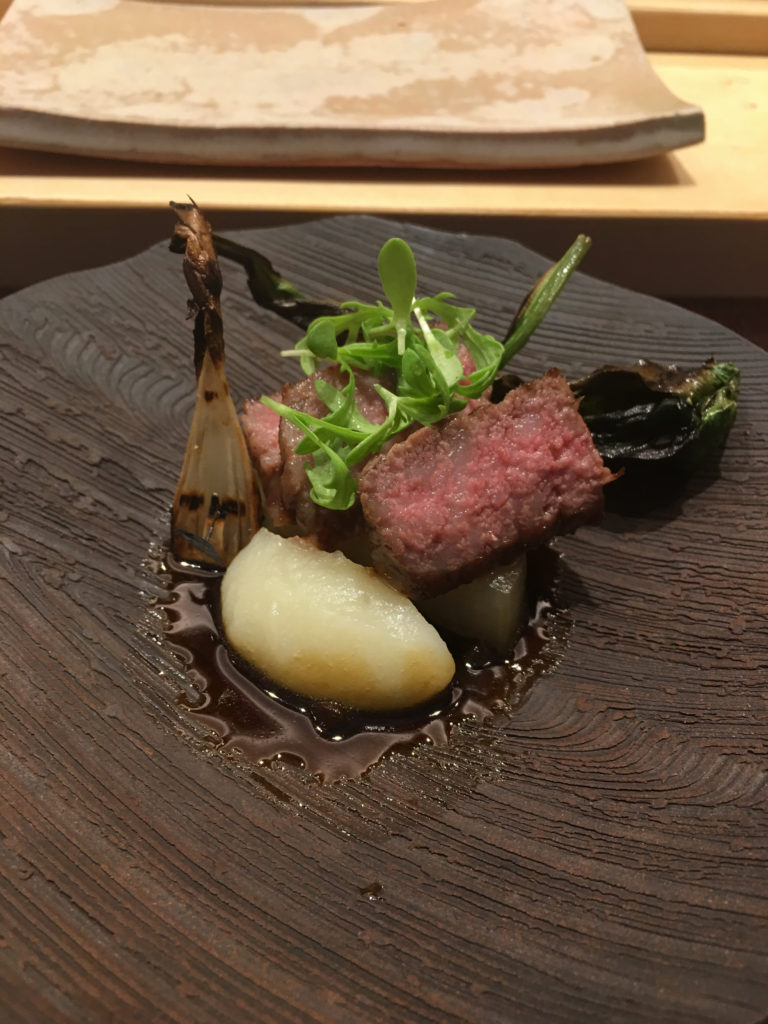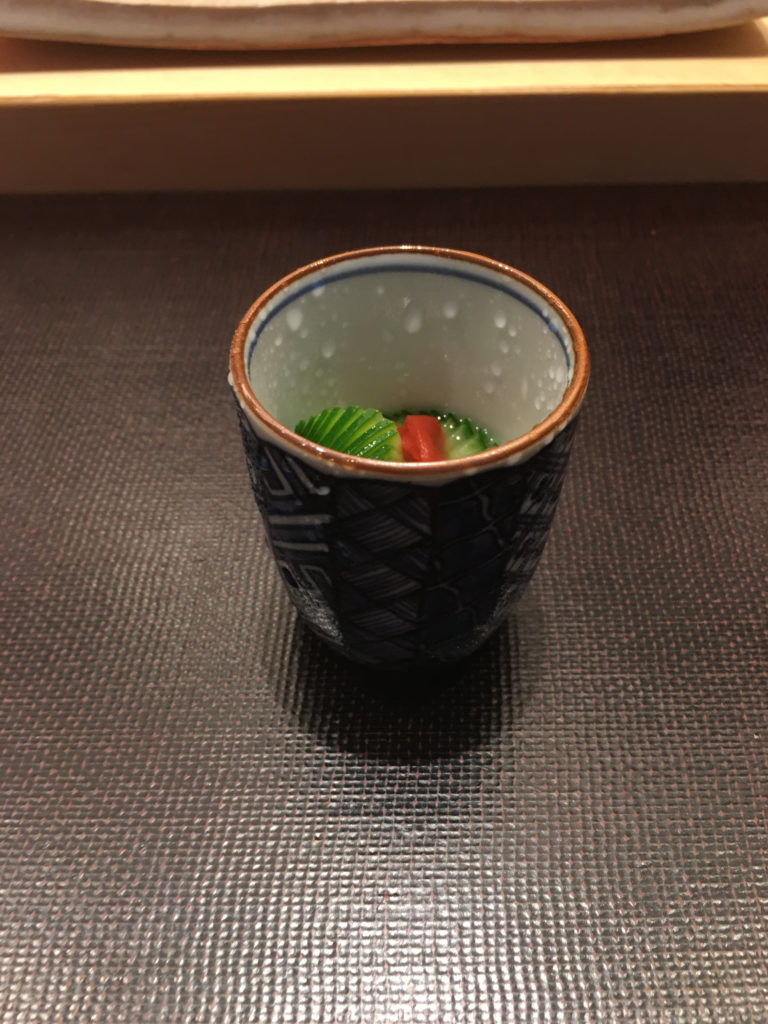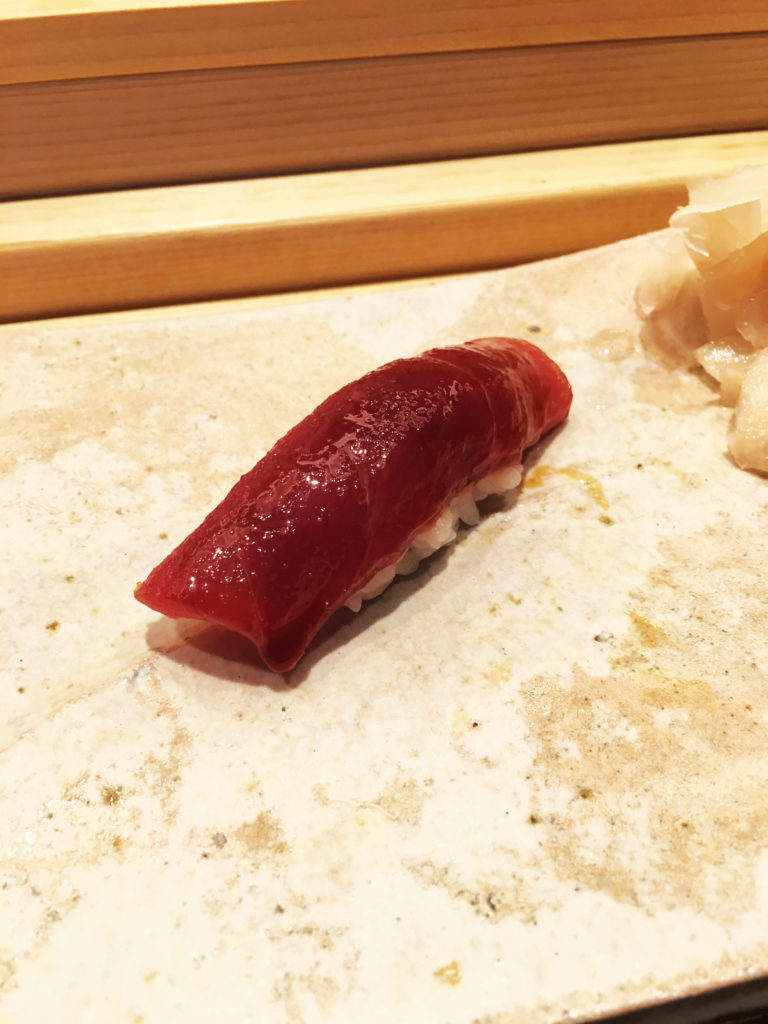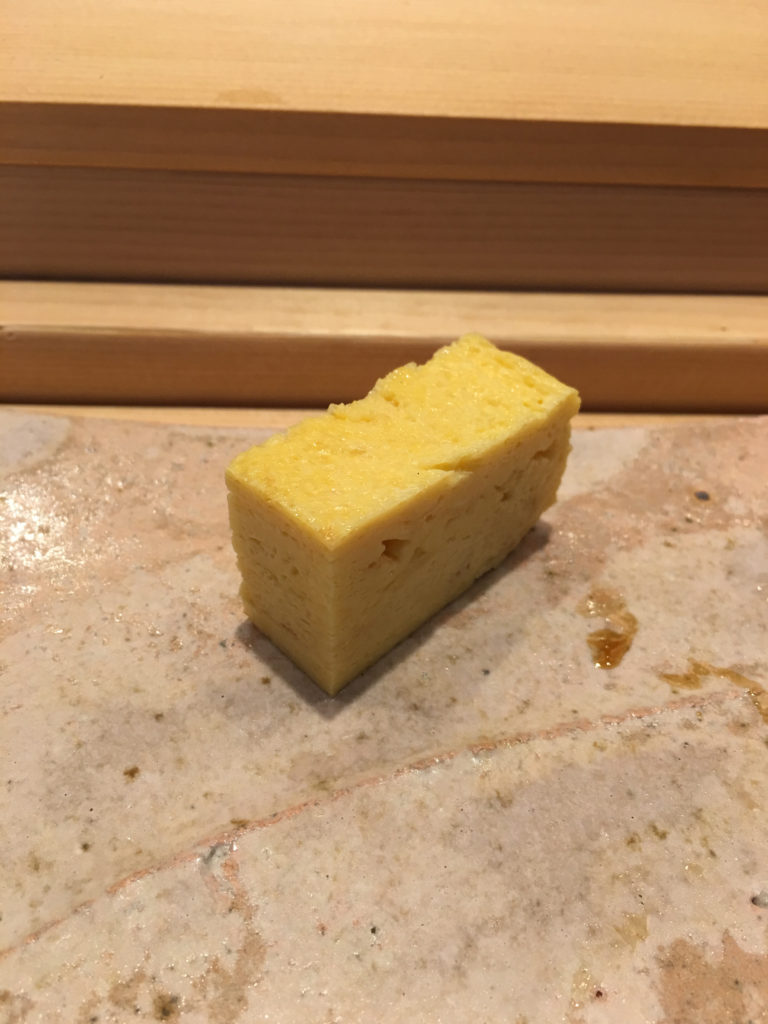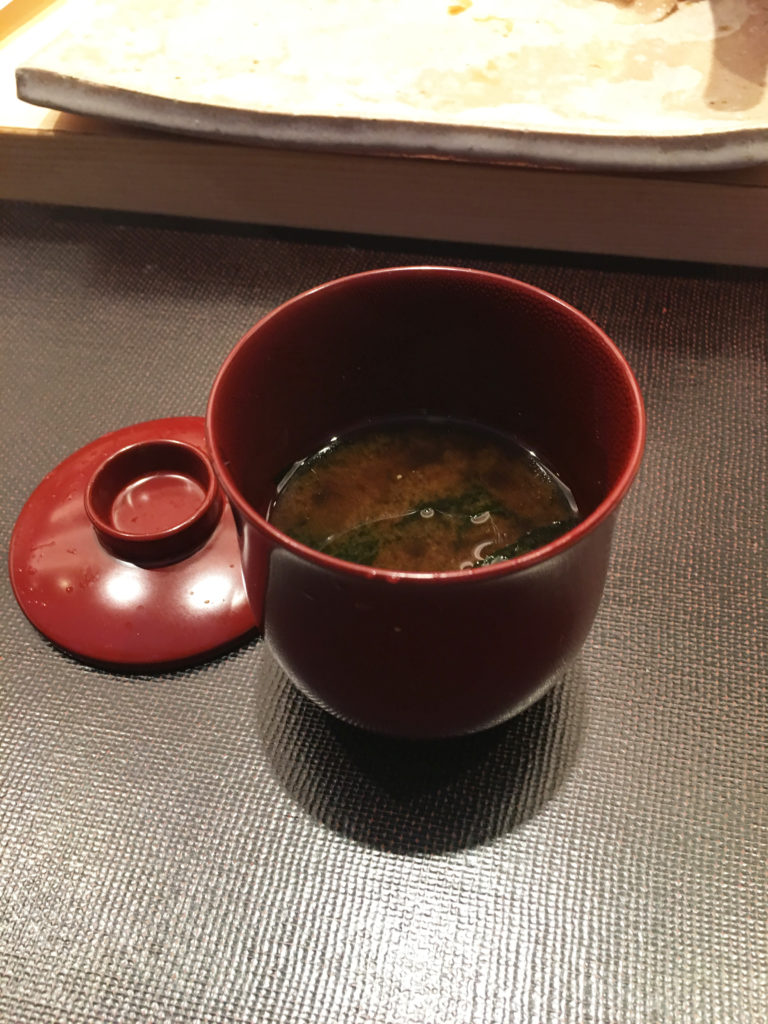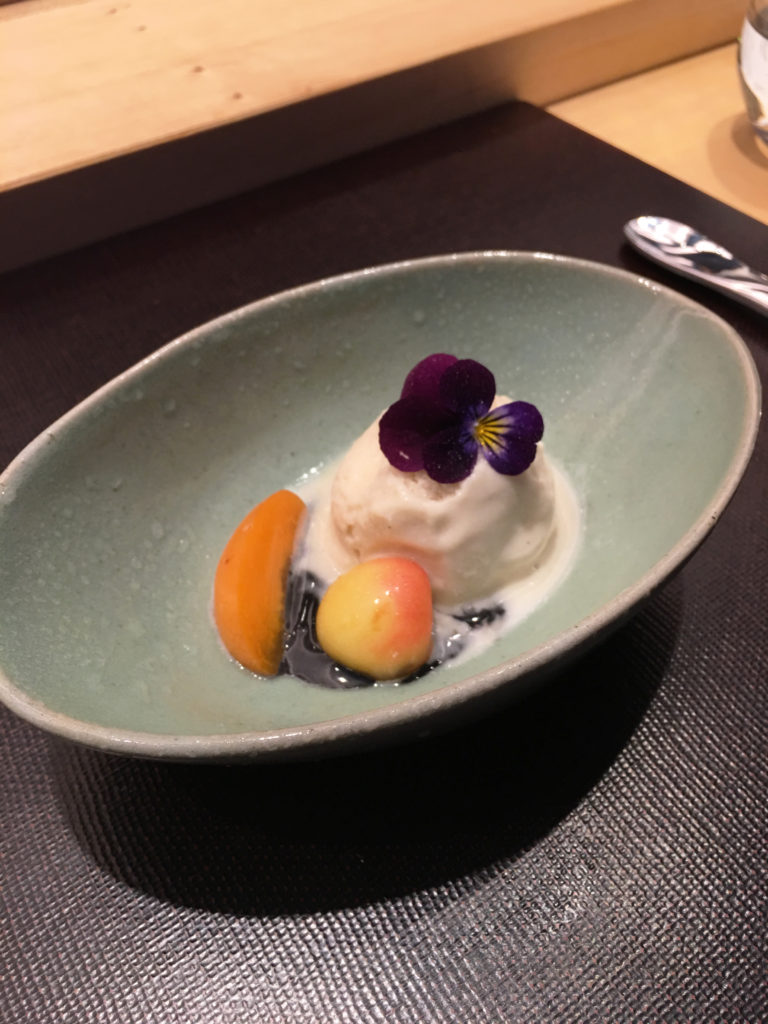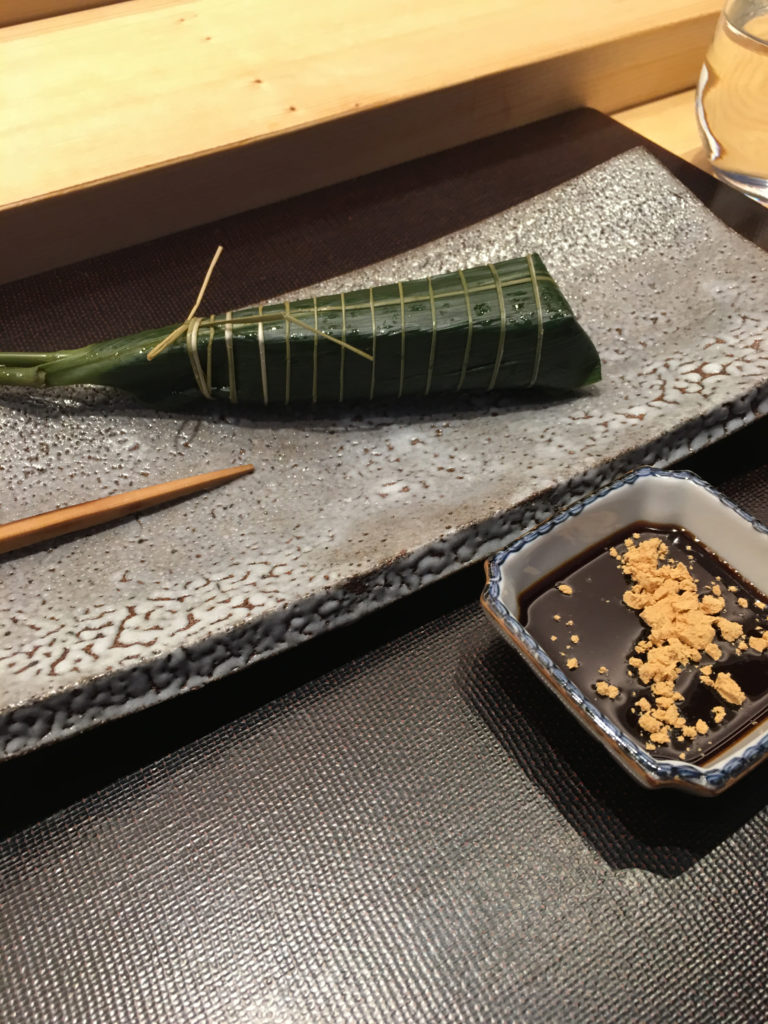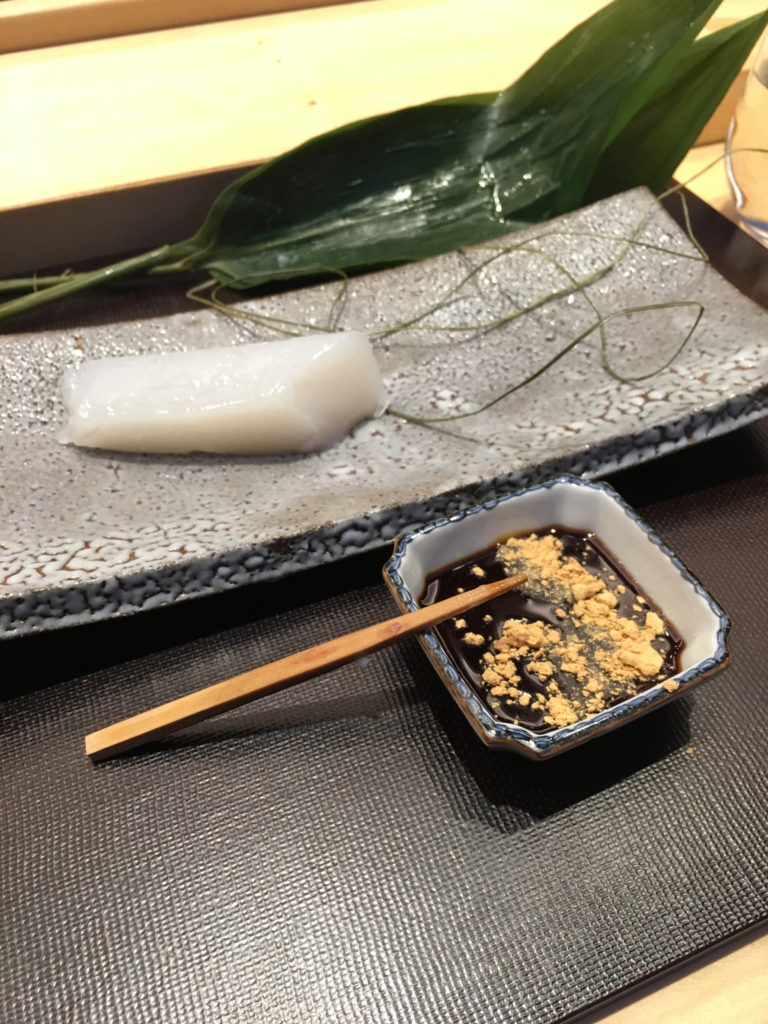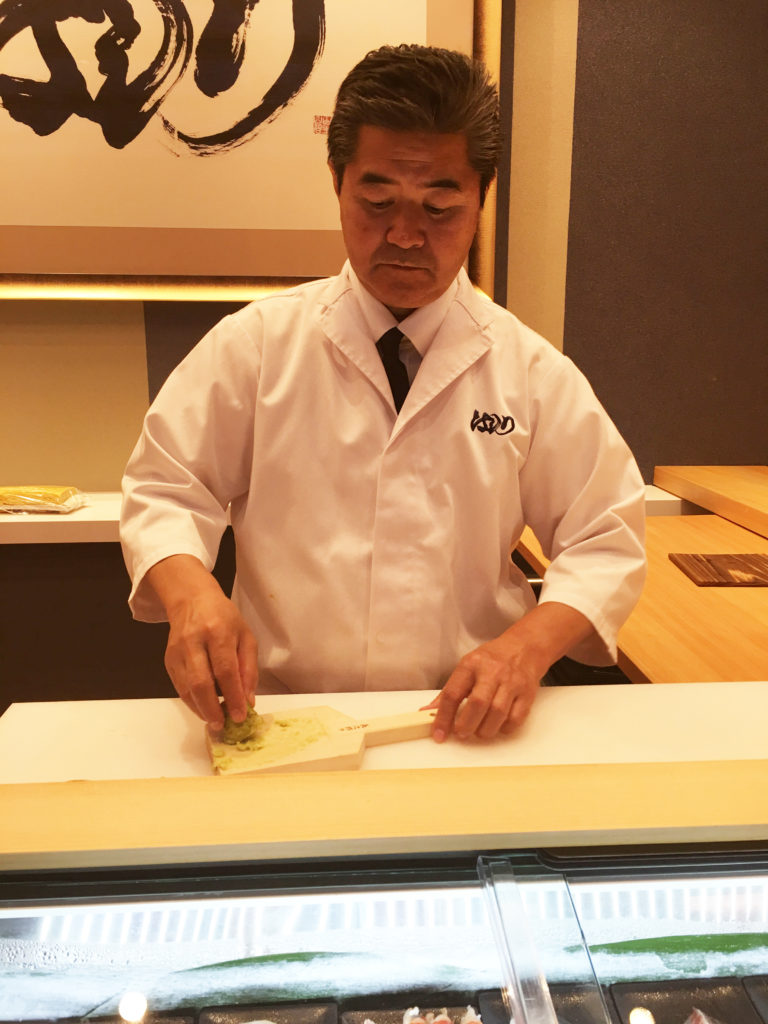
May 13, 2016
Sushi Hashiri SF’s pedigree is a less renown restaurant in the Daikanyama, Tokyo location that opened in 2012. In looking at Japan’s #1 restaurant rating site, ww.tabelog.com, you can only see seven reviews that averages to a 3 out of 5, which is mediocre by Japan’s standards. Granted it is a small sample size. However, the Hashiri SF opening appears to be a much more ambitious endeavor that focuses on a very upscale blend of both kaiseki and sushi experience.
Despite it’s lack of fame in Tokyo, I was hoping at their target price point ($250 at the table and $300 at the sushi bar), that they will rival the more well-known sushi-ya experiences in Ginza and Roppongi, as there’s only a small handful of the restaurants in the San Francisco that can barely come close to the experience. I was also curious to see how their kaiseki portions would be integrated; typically in Japan, you get one or the other but not both. My family and fell in love with kaiseki dinners while traveling through Japan and staying at numerous ryokans where this style cuisine is served, as well as having a wonderful experience at Michelin 3 Star Kojyu in Ginza. If successful, I am hoping they fill a missing void in this execution food style culture in San Francisco.
The San Francisco location opened on Friday, May 13th, with very little fanfare, as I’m sure they were getting their feet wet. The location decor was spacious and modern, yet it kept the distinct Japanese element of simplicity. I secured four counter seats and dined that night with my wife, her sister, and brother in-law. We were fortunate to have sat in front of Chef Tokunori Mekaru, pictured above, who hails from their Daikanyama location to help train the other sushi chefs.
The first portion of the meal was their Kaiseki courses:
Sakizuke (means to start with), our opening course, is a critical element of kaiseki as it sets the stage of the rest of the meal. Here, they served Akasa Ebi (shrimp) over corn puree, topped off with white sturgeon caviar. The shrimp was perfectly poached with a sweet and crunchy texture, complementing the sweetness from the corn puree. The brininess and smooth texture of the white caviar was enhanced by both elements. It was an excellent start of things to come.
Next course was the Zensai (season ingredient appetizer), where the tairigai was served in it’s own shell and served with local greens: fava beans, fiddle heads, asparagus, and bok choy whites. Tairigai is a shellfish that looks like a giant mussel on the outside; however, on the inside, you have a firmer and crunchier textured big adductor muscle like a scallop. I like the dish but thought the asparagus should not have been used, as the tairigai is a delicate and subtle flavored shellfish. I had a similar dish in Kojyu and they used sansai (spring mountain vegetables) vegetables that were less bold in taste and worked much better.
Next up was the critical Owan course, or clear soup. This is usually the highlight of many of the kaiseki courses I had while traveling through Japan, where the dashi uses the highest quality katsuo bonito and kombu. In fact, the bonito is not shaved until it is needed in cooking to provide the full umami from the bonito. The finished dashi is then slightly thickened with kuzu (type of root) and the finished product will enhance any further ingredients the chef decides to add. Here, ainame (greenling fish), was lightly poached to perfection in the broth and was still rare in the middle in a tataki style. The other main star in the dashi was the sesame tofu. The fish was milder in flavor with a natural sweetness, while the sesame tofu had a delicate texture with a nutty flavor to complement the other components. Shitake added texture and an earthy flavored depth, and it was finished with a carrot and sansho leaf to provide color. Everything worked in harmony and was almost perfection.
The Tsukuri course was next, which was the sashimi course. Aburi kinmedai (seared golden eye snapper) is placed on top of a ponzu jelly, topped with scallions, dehydrated egg yolks, and shiso. This was further paired with slightly pickled julienned young ginger. The simplicity of the seared fatty fish was transformed by the pairing with the ponzu and other elements to a bolder and flavorful dish.
Mushimono was the next course, which was the steamed course. This was elevated chawanmushi (steamed egg custard) from the morel mushrooms. Simply amazing, as the chawanmushi was so delicate and just dissolves in your mouth, but the amazing dashi was further deepened in flavor by the morel mushrooms, which also provided the texture component. So simple, yet so elegant…my favorite of the night.
Next course was the Yakimono course- the grilled course. Here, Kagoshima wagyu was served medium rare and paired with simmered spring daikon, celeriac puree, and grilled ramps. I loved the overall presentation and the pairing with grilled ramps; it was brilliant as it added a gentle garlicky and bitter notes from the char to complement the beef. The daikon was soft and added a slight sweetness to the fish. The puree binded it all together. This was a great way to wrap up the kaiseki portion of the meal and was very satisfying.
Next course was the Kuchinaoshi, which served as the palate cleanser course. Junsai is called water shield in English and was the highlight of this dish and served as the liquid base. Junsai has a gelatinous texture, but the middle where the water plant is located provided a crunchy texture. It was slightly briny yet sweet, and a little vinegar is usually added to provide acidity. The cucumber and fresh ume plum finished the dish to cleanse the taste buds for the nigiri courses to come.
The nigiri courses were very good, a definite taste of true Edomae Sushi. Chef Mekaru served us and you could see from his expert four-point molding motions of the shari (sushi rice), that he has decades of experience. The molds were light, and yet, did not fall apart. The shari used aka-su (red vinegar), and thus, adding a stronger vinegar taste in the rice- this is what I have grown accustomed to and prefer. Each piece had an expert dab of wasabi from Tsukiji, and the tsume was very flavorful, packed with umami to enhance the fish.
Kasugodai (baby red snapper) is served with its skin. Good neutral fish to help allow the patrons to get a taste of the shari and the tsume sauce.
Suzuki was next and it may have been cured or aged. The aging gave the nigiri a dissolve in your mouth texture.
Ika- squid- was expertly scored to provide an extra crunch and topped with salt and a dash of lemon to enhance the flavor.
Kohada, or chad gizzard, is a must in any edomae sushi as it tests the skill of the chef. It passed with flying colors.
Aji is horse mackerel topped with grated finger and chives.
Nodogoro is black throat perch. This was perfectly seared to bring out the fat while adding a nice charred taste to complement this exotic fish. It was very delicious.
Hotate is scallop and was very large and plump.
Torigai is Japanese cockle found in Kyushu. I have only seen this previously in Japan and was thrilled to experience this in the states. The meat of the clam was big and fleshy- very sweet with a bold sea ocean taste. In Japan, they would take the raw clam and slam it on the counter in front of you to further tighten the meat, providing a better texture. They didn’t do this here, but from the looks and the scoring, they may have done this previously. It was really good.
Kuruma ebi is Imperial Japanese Prawn, a main stable in any high end sushi ya.
Chutoro is medium fatty tuna, and you could not go wrong with this melt-in-your-mouth goodness.
Akami zuke is the lean meat of the tuna that was cured in soy adding depth to the nigiri, while further softening the texture of the fish. It melted in your mouth.
Kegani crab is a Hokkaido hairy crab. This was served with its head fat, also known as kani miso. The meat was so good and the heat fat is the perfect topping.
Tamago was a little disappointing as I was hoping for the more cake-like consistency I had from the Ginza and Roppongi Sushi-ya. Was tasty but the consistency is more omelet than pound cake I was hoping for.
Red miso soup provided a finish to the main courses. The dashi was smokey and packed with flavor, so it was simple but very delicious. Good way to prepare the palate for dessert.
White sesame ice cream made from soy milk and paired with black sesame sauce and fruits. This was an amazing creation, as the ice cream was creamy and smooth, yet not too sweet, allowing you to enjoy the smooth feel of the ice cream and the nuttiness of the sesame on sesame.
Last dish was a mochi chimaki wrapped in bamboo leaves.
Here is what it looks like unwrapped. You dip the mochi into the kuromitsu with grounded and toasted soy flour. Interesting but not quite my kind of dessert.
Overall, I felt that the courses and progression from start to finish was perfect. They were able to marry up the kaiseki portion with the nigiri courses. If this experience is how their Tokyo branch is presented, then I am surprised by the low tabelog rating, as I felt everything was top notch. In any event, I feel their kaiseki portion successfully fills a niche in San Francisco to experience.
My only concern is that Chef Mekaru is here only for a limited time to train. I hope they rotate him from the Tokyo branch continue to train the local chefs they have hired. Time will tell, but look forward for a repeat visit in the future. 5/5 stars.
